The trading and logistics platform New Silk Road BRICS is a worldwide freight exchange and a global trading platform created under the auspices of:
Transport Association of BRICS,
Energy Association of BRICS,
Based on the decisions of the leaders of the states of China, Russia, South Africa and Brazil.
Johannesburg Declaration of the BRICS 2018 Summit item 80.
Memorandum on the joint study of the prospects for using distributed registry (blockchain) technologies in the development of the digital economy.
The purpose of our resource is to maximize the development and popularization of the civilizational project “New Silk Road”, the prototype of which was the “Great Silk Road”
It united in one whole the two main historical routes: one – going from the West from the countries of the Mediterranean to Central Asia, the second – connecting Central Asia with the Han Empire.
“The Great Silk Road”, the origin of which can be attributed to the second half of the 2nd century BC. e., represents a unique historical and cultural value for mankind and is included in the UNESCO World Heritage List.
At the heart of the modern “New Silk Road” lies the initiative – “One belt, one way”.
The initiative “One belt – one way” was included in the resolutions of the UN Security Council and the UN General Assembly and was widely recognized by the international community.
“One belt – one way” is two joint projects: “Economic belt of the Silk Road” and “Sea Silk Road of the XXI century.”
Economic belt of the Silk Road (EBSR)
Includes land routes that connect China with the three regions of the Eurasian continent:
EUROPE – THROUGH CENTRAL ASIA AND RUSSIA;
THE MIDDLE EAST – THROUGH CENTRAL ASIA;
SOUTH-EAST AND SOUTH ASIA WITH ACCESS TO THE COAST OF THE INDIAN OCEAN.
There are six economic corridors planned in the EBSR project:
LAND EURASIAN CONTINENTAL BRIDGE;
CHINA – MONGOLIA – RUSSIA;
CHINA – CENTRAL ASIA – WESTERN ASIA;
CHINA-PAKISTAN;
CHINA – THE INDOCHINA PENINSULA;
BANGLADESH – CHINA – INDIA – MYANMAR.
THE PROJECT “SEA SILK ROAD OF THE XXI CENTURY”
Is a sea route that connects China through seaports on the east coast of the country with two regions:
EUROPE – THROUGH THE SOUTH CHINA SEA AND THE INDIAN OCEAN;
THE COUNTRIES OF THE SOUTH PACIFIC – THROUGH THE SOUTH CHINA SEA.
The project "Ice Silk Road"
Russia and China are now planning joint development of the Northern Sea Route as an Arctic route in the new “Ice Silk Road”
This route may be of interest for the transport of goods traveling between EU countries and Asia. For which the distance and the delivery time are reduced by approximately 30%.
The objectives of the “One belt one way” initiative
- Creation of an improved and facilitated transit-transport system, between Asia, Europe and Africa.
- Maximum assistance to the socio-political dialogue between the countries of the economic belt of the “New Silk Road” and the “Sea Silk Road of the 21st Century”
- Development of humanitarian ties between partner countries.
- Mutual integration of infrastructure and development of the latest information digital technologies in these countries.
- Development of trade relations between the countries participating in the initiative “One belt and one way”.
- Creation of an open model of the world economy.
- Formation of the “Community of One Destiny”.
The concept suggests that the interweaving of the interests of all countries are taken into account, for the harmonious development of mankind. At the moment, the world community faces many serious threats, such as: military conflicts, famine, lack of resources, serious climate change, environmental pollution, international terrorism, trade wars, etc., which can not be resolved by one or several countries. Resolution of these problems requires the cooperation of all countries of the world! “Community of one destiny” – implies the rejection of wars and power politics.
This is an absolute new type of international relations that can change the outdated and inefficient model of global governance
Therefore, the initiative “One belt – one way” is able to unite the majority of countries of the Eurasian and neighboring continents with a population of more than 4 billion people. As of 2018, it was supported by more than 100 countries, 46 cooperation agreements were signed on the joint construction of “One belt – one way” projects with 40 states and international organizations, such as: SCO, UN, UNSC, WHO, UNDP, ESCAP and etc. On the margins of the BRICS and SCO summits, contracts were also signed for the construction of major infrastructure projects, “One Belt, One Way”.
So in September 2017, on the “fields” of the BRICS summit in China’s Xiamen, Thai railwaymen signed two contracts with their Chinese counterparts to implement the first phase of the BCM project in Thailand, Laos-China. In the first stage, a site from Bangkok to Nakhon Ratchasima (250 km) will be built in Thailand by 2021. Within the second phase, the SCM will be extended to Nong Khai on the border with Laos.
About the platform “New Silk Road BRICS”
At the moment, it is the first trade and logistics site in the world supported by specialized structures of such a high international and supranational level, where crypto-currencies and digital tokens will be used in real foreign trade transactions. It should be noted that only the application of cryptography algorithms, blockchain 3.0 and crypto currency in global world trade and logistics, will allow to raise all the technology and methods of cargo transportation to an absolutely different, much higher level of development.
Our online blocking SaaS system consists of two platforms: logistics and trading.
More about the platform.
